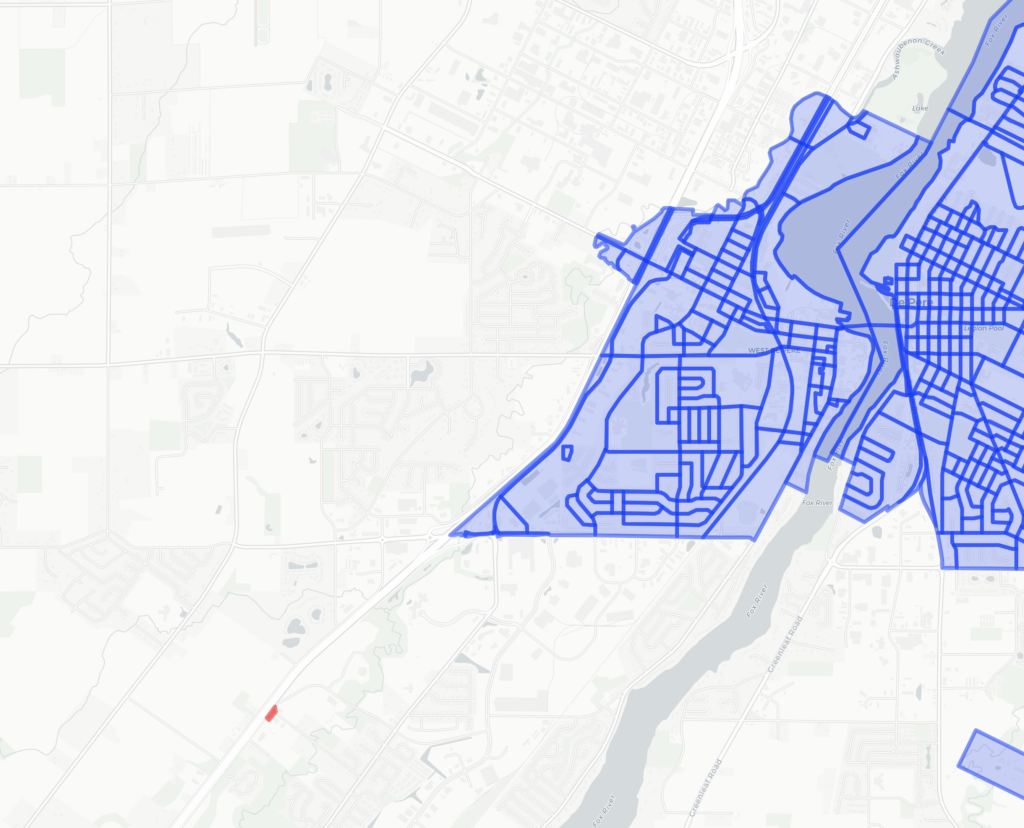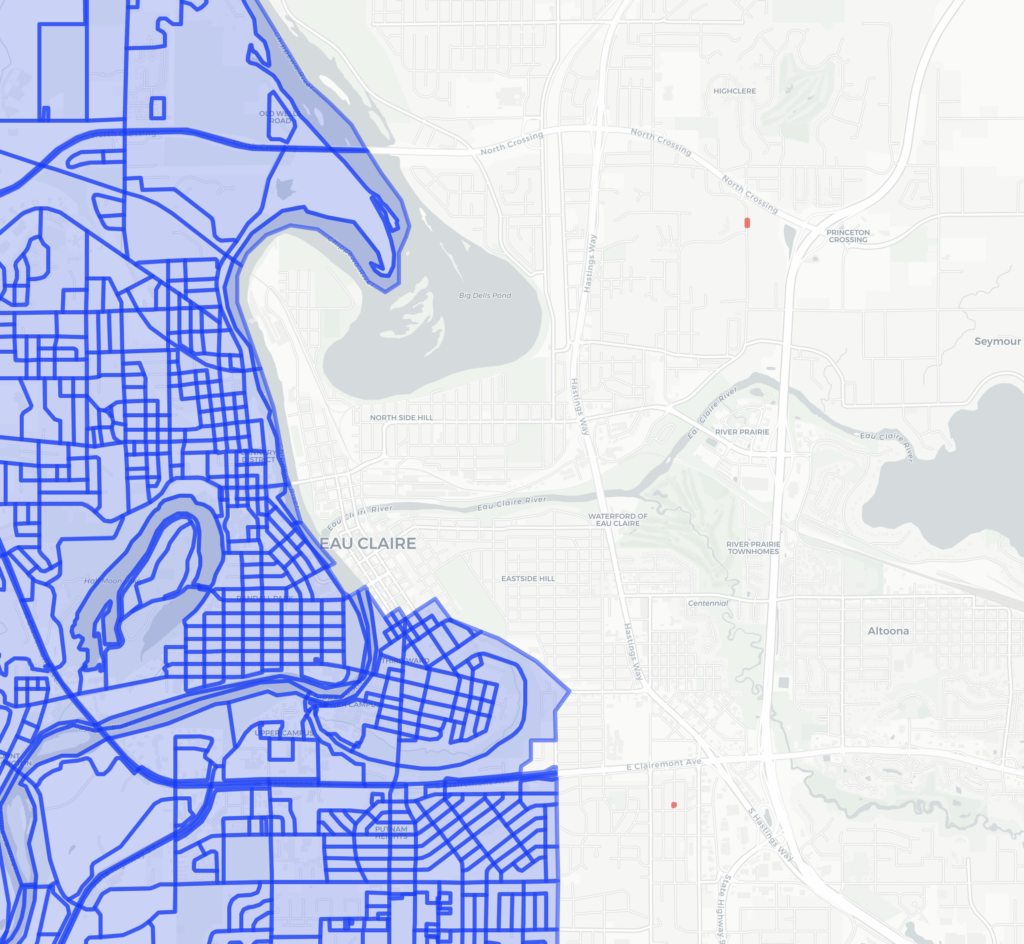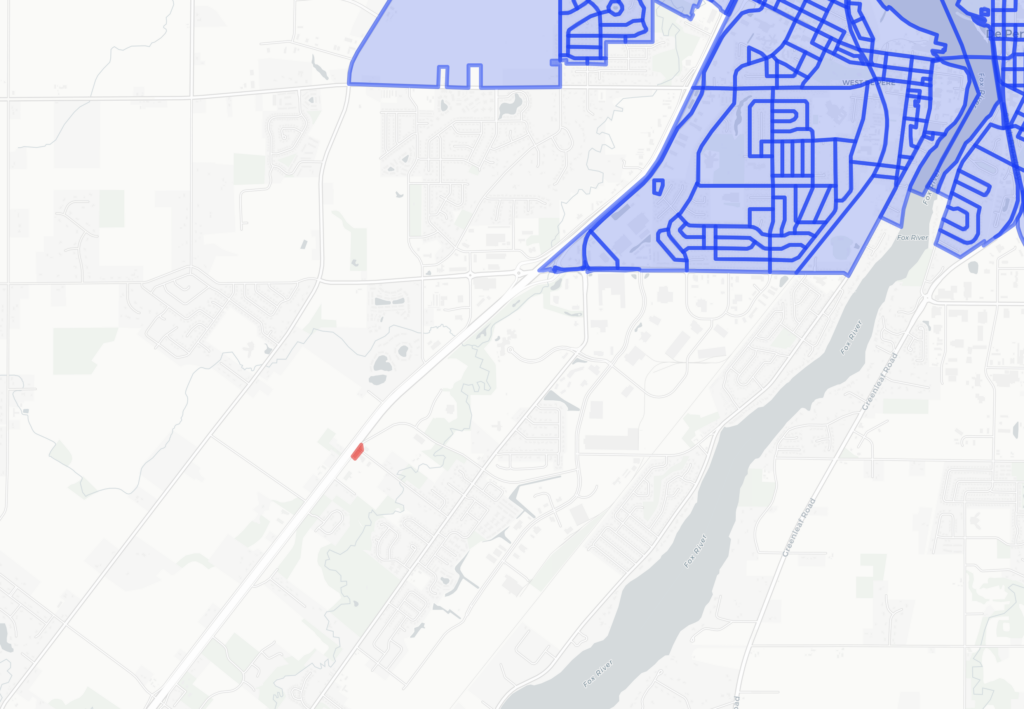The Wisconsin Legislature passed new state legislative maps on January 23 and 24, 2024. First, the Senate passed a substitute amendment to 2023 Assembly Bill 415. It passed 17-14, with the support of only Republican senators. The next day, the Assembly passed the same amendment, likewise without Democratic support. Governor Evers promised to veto the maps shortly thereafter.
The legislature’s latest maps are very similar to the remedial maps submitted by Evers himself to the Wisconsin Supreme Court. Compared to his plan, the maps passed by the legislature move 1,292 out of 202,510 census blocks. The main motivation seems to have been separating incumbent Republican legislators paired in the governor’s map.
In making these small changes, the Republican legislators created three noncontiguous districts–two in the Assembly and one in the Senate. The noncontiguous blocks are small and unpopulated. They could easily be assigned to an actually adjacent district without changing anything meaningful about the district.
The blocks are 550099400071006 in Assembly district 88, the same block in Senate district 30, and 550350008031031 and 550350003011036 in Assembly district 93.
The maps below show each of these districts. The noncontiguous blocks are shown in red. The main component of the district is shown in blue.
I created these districts using the block assignment file used to draft the legislation in question, which I obtained from the Legislative Reference Bureau. You can download a copy here. I also verified these block assignments within the full text of the substitute amendment, which you can view here.
Click each image to view it as an interactive web map.
AD 88

AD 93

SD 30

Regarding the joint stipulation
A set of ward fragments (themselves consisting of multiple blocks) contain incorrect ward and municipality labels. All the parties agreed on a list of such blocks in a joint stipulation dated January 2. These ward fragments do contain the three noncontiguous census blocks in the legislature’s latest plan. The meaning of the join stipulation is contested among the parties, but it is clear that the stipulation does not challenge the location of any of the given census blocks. Moreover, the legislative Republicans are one of the parties explicitly rejecting the idea that the join stipulation had anything to do with contiguity. See footnote 8 of their response brief filed January 22.
For a thorough discussion of the join stipulation and contiguity, see this blog post which describes similar contiguity issues in the Senate Democrats proposed remedial map.
